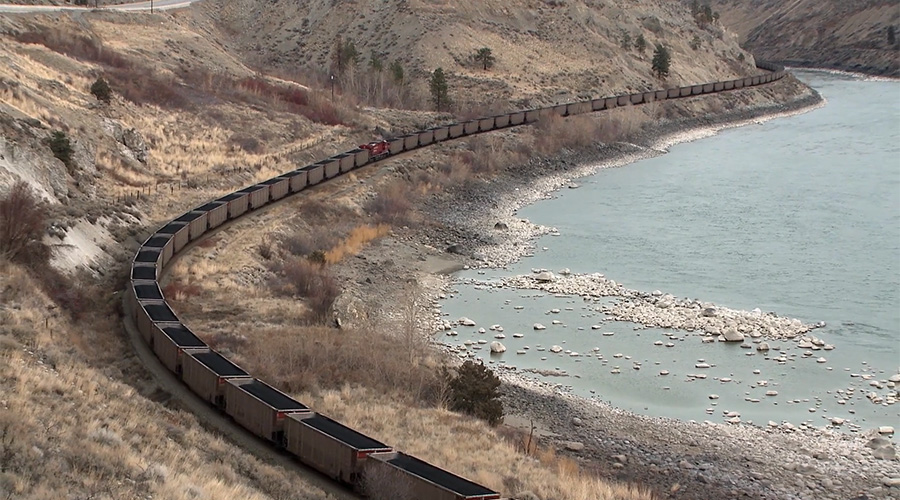CN advances APIs in effort to build a ‘digital railroad’
6/30/2021
By Jeff Stagl, Managing Editor
Since early 2020, CN has implemented application program interfaces (APIs) to enable customers and global supply-chain partners to obtain critical freight information and trace shipments online in real time. The Class I now offers APIs that provide GPS locations, shipment status, estimated times of arrival (ETAs), bill of lading information and third-party intermodal shipment tracking functions.
APIs are designed to accommodate an easier and more cost-effective transmission of real-time data from one computer system to another. The railroad industry and transportation industry at large have undergone a major transformation of late in the way goods are moved — with complex supply chains more the norm — so most Class I are developing or offering APIs to improve shipment visibility.
APIs provide a competitive advantage and help customers grow their market share, CN officials say. They are part of the Class I’s multi-faceted effort to forge an end-to-end and seamless digital platform that can deliver real-time visibility and connectivity through state-of-the-art technologies.
Launched last year, the railroad’s GPS location API was an industry first at the time, CN officials say. Customers can use it to track a rail car or container. Shippers, consignees and third parties no longer need to log into the railroad’s eBusiness platform or contact a customer service representative to receive ETAs and tracking information, helping save time and reduce manual interactions, CN officials say.
Truck-only data is the latest addition to the Class I’s APIs governing GPS location, bill of lading activities and shipment status. Equipment without a rail component now can be tracked online.
The APIs are not just for intermodal or carload customers — all shippers can benefit from them, CN officials believe. For example, Canadian steelmaking coal producer and exporter Conuma Resources Ltd. uses CN unit trains to transport its Asia-destined products to the Port of Prince Rupert in British Columbia. The shipper uses CN’s APIs to obtain a granular view of the unit trains’ location, speed and direction, pulling data that’s refreshed every five minutes.
Conuma officials expressed an interest in APIs to better monitor empty inbound trains returning to the company’s coal mines. Now, the shipper’s operational crews know where cars are located at all times via a digital screen installed at a mine’s load out area.
“We have gone from using email with ETA estimation to having a real-time map that displays trainsets, speed and up-to-date ETAs. One click and we can drill down to the exact location of our trains,” said Ryan Staschuk, Conuma’s director of marketing and logistics, in an online post. “We use this data to monitor cycle times and to determine how much time is spent in each stage of the journey. This capability drives significant improvement into our logistics precision — we can plan, forecast and do business with greater accuracy.”
 CN now offers APIs that provide GPS locations, shipment status, estimated times of arrival, bill of lading information and third-party intermodal shipment tracking functions. CN
CN now offers APIs that provide GPS locations, shipment status, estimated times of arrival, bill of lading information and third-party intermodal shipment tracking functions. CNPrecisely locating inbound unit trains en route back to Tumbler and Falls, British Columbia, helps Conuma with mine production schedules and workforce planning — two key metrics that will help them drive efficiencies within their overall operations, CN officials said in the post.
"[The] tailor-made API solution unlocked valuable insights and exposed unprecedented levels of data, driving efficiency and precision in their business,” added David Trent, CN’s vice president and chief digital officer.
Other CN customers note efficiencies from the railroad’s APIs as well. Ray-Mont Logistics Inc. — which provides transload, freight-forwarding and carload services — uses them to manage its complex supply chain and facilitate international trade across CN’s network.
APIs help streamline both rail and container movements, Ray-Mont Logistics officials say. The track and trace APIs provide real-time GPS location and ETAs directly into Ray-Mont’s proprietary AI-based system, assisting critical and time-sensitive decision making with more accurate information.
“CN included us very early on in the development process, which provided a high-quality end result. This collaborative and tailored approach facilitated the speed of development, transparency of information, and ease of end-to-end experience,” said Luke Mireault, Ray-Mont’s VP and chief innovation officer, in an online post.
Better traffic management capabilities
Meanwhile, Cando Rail & Terminals has gained better traffic management capabilities with CN’s APIs. Cando’s offerings include short-line operations, terminal, transload and rail-car staging services, and a supply-chain optimization platform named Quasar.
Using the GPS location and ETA functions, Cando gains optimal shipment visibility in its cloud Quasar platform. The APIs enable the company to more efficiently plan resources within its terminals, update pipeline reports and identify hazmat cars.
“CN took the time to learn about our different products, explaining how the APIs could add value,” said Steve Bromley, Cando’s VP of commercial and service delivery, in an online post. “We look forward to CN’s ongoing API developments.”
CN plans to continue rolling out new API functions for its customers and supply-chain partners.
“By adopting a design-thinking culture and a cloud-first approach, [we are] building the digital railroad of the future,” CN officials say. “As we move forward towards new levels of connectivity, APIs will help us deliver optimized supply chain operations and advanced services, while continuing to drive down supply-chain costs.”


